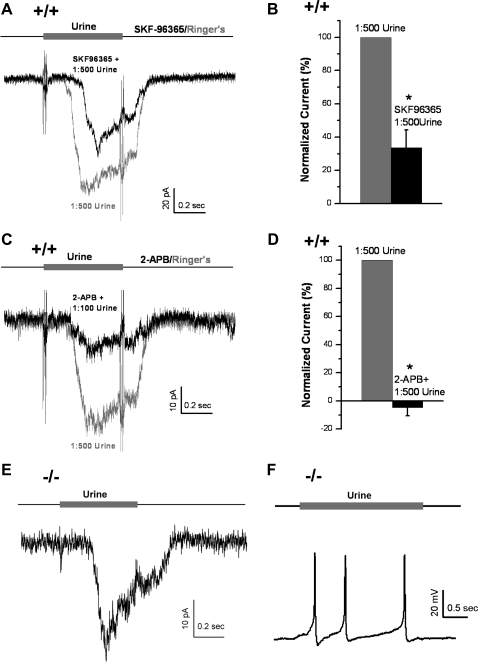Fig. 2.
Urine activated a transient receptor potential channel (TRPC2)-independent pathway in WT and TRPC2−/− VSNs. A and B: putative TRPC2 channel blocker (100 μM SKF-96365) significantly decreased but did not block the urine (1:500) responses in WT neurons (n = 8, P < 0.001, paired Student's t-test). C and D: second putative TRPC2 channel blocker (50 μM 2-APB) inhibited the urine responses (1:500) in WT neurons (n = 5, P < 0.001, paired Student's t-test). However, 2-APB failed to completely block the odor responses to a more concentrated urine solution (1:100). E: in voltage-clamp mode, a 0.5-s stimulation of urine (1:500) induced an inward current at −80 mV in a TRPC2−/− VSN (−/−, n = 6). F: in current-clamp, a 2-s stimulation of urine (1:500) depolarized the membrane potential and elicited repetitive action potentials in a TRPC2−/− VSN (resting membrane potential = −55 mV, n = 12). *P < 0.05.

